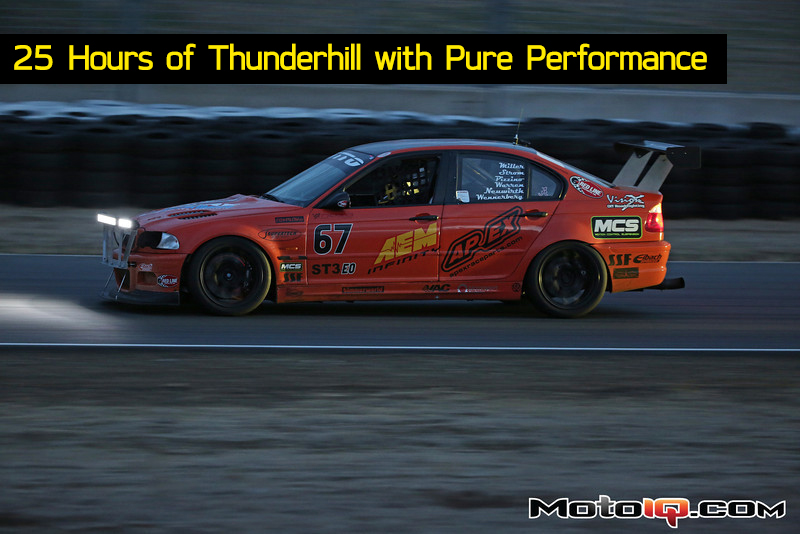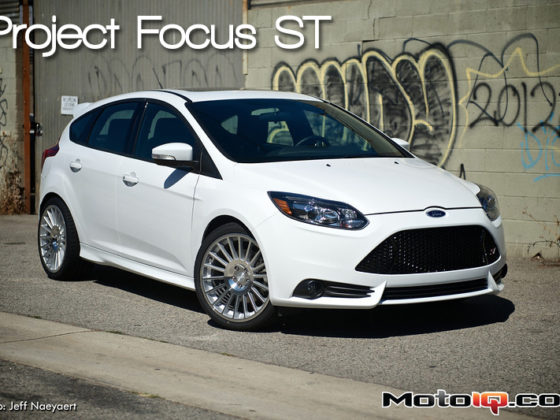,
Test Days, or in this case, Murphy Kicking you in the Nuts
 Daniel is almost done swapping mills on the first day of practice. Beau Brown is in the background.
Daniel is almost done swapping mills on the first day of practice. Beau Brown is in the background.The first two days are for testing—getting drivers behind the wheel, doing fuel calculations and stuff like that—but we didn’t get to do that. Instead we had an engine blow up and had to replace it, which we did on the first day, and we were ready to go the second day.
On the second day we had a power steering hose fail on the dyno. NASA does tech inspection after the race but we always dyno before the race so we know exactly where we are at going in.
 Gotta look good! A quick spray after repairing the front clip from a minor crash in practice. The car rolled up to the start wet.
Gotta look good! A quick spray after repairing the front clip from a minor crash in practice. The car rolled up to the start wet.Then, we had a small crash in testing but everything looked okay. The morning of the race we do all the cleanup and prep work, make sure gas is in the car, just going over everything one more time…we had to paint the bumper because of the crash too. We rolled to the grid with a wet bumper, but it dried fast (laughs). There is always adversity that happens at this race and you can never plan enough. And all this happened before the race even started.
On Thunderhill
 This year Daniel described the race as the “Battle of the Big Rigs.” Over 70 cars start. Only about 1/3 of them finish.
This year Daniel described the race as the “Battle of the Big Rigs.” Over 70 cars start. Only about 1/3 of them finish.There are some speed secrets to Thunderhill. There are a lot of elevation changes and blind corners. You have to trust that the pavement is there. It’s mentally grueling to someone who hasn’t been there. It takes a tremendous amount of time and effort to run the race. It starts with 70 odd cars and only about 20 cars finish. I never doubt that we won’t finish because of our preparation though.
The Race
As soon the race starts Ivan is the boss as Crew Chief. He is the guy giving direction. He chose the lineup based on mileage of the car but you have to ask him about the strategy (we did, see end of article). I got to know Ivan when I was working at a shop and built racecars for him and his son. He is an endurance guy. For him sprint races are junk because it’s all out and there is little strategy. With endurance racing there is strategy involved and he loves it.
 Driver change. Once the race starts, Wennerberg leaves all decision making up to Crew Chief Ivan Zwart. Zwart only changes drivers when they change tires, and he keeps close track of fuel and the competition.
Driver change. Once the race starts, Wennerberg leaves all decision making up to Crew Chief Ivan Zwart. Zwart only changes drivers when they change tires, and he keeps close track of fuel and the competition.We felt pretty good once the race started. At the 6 hours mark we made a driver change and put Greg in the car and when he went to leave it wouldn’t start. Beau jumped on it with the laptop and looking through the logs in the Infinity he discovered that the cam sensor was gone. The Infinity ECU’s software is awesome. I liked that you could swap sticks so fast on the Infinity and get quick access to your logs. It makes it so there’s a tattletale…‘oh, there’s an overrev’, or ‘your intake temps have been this all race and now they are this so something’s wrong’. If you have multiple sticks you just pull one when the car comes in and switch it out. When I first saw the sticks I thought it was not a great idea but now I love it and it’s a lot easier than plugging into the ECU to pull data. It’s as close as you can get to telemetry and a hell of a lot cheaper, and Beau was amazing going through the data.
Anyway, we pushed the car in the back and changed the cam sensor and at the same time we noticed the radiator was leaking from the crash the day before. So we left Greg in the car, changed the radiator and cam sensor and the car started right up.



